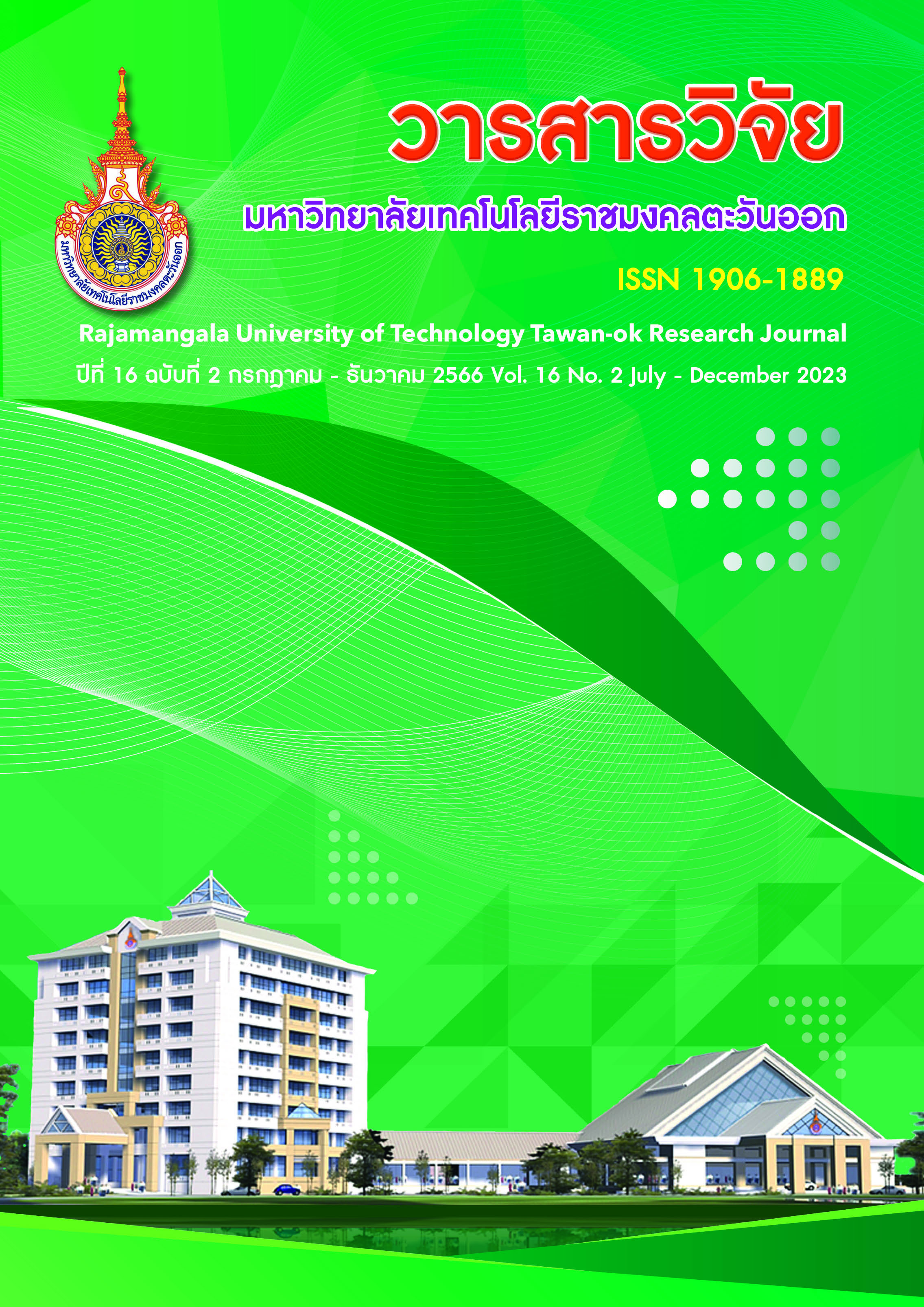Product Development of Bitter Orange (Citrus aurantium L.) Gel Bead
Main Article Content
Abstract
The research aimed was study the production of bitter orange (Citrus aurantium L.) gel bead. The ration of bitter orange juice at 3 levels (15%, 30% and 45% by weight of water) was to study in the first step. The results showed that diffferent ratios of bitter orange juice affects the total soluble solid (oBrix), pH and tritrable acidity. The pasteurized bitter orange juice with high acidity (bitter orange juice at 45% by weight of water) will be affect spherical setting of bitter orange bubble. Bitter orange bubble can not good into a spherical shape. The most panelists accepted the bitter orange bubble with 30% bitter orange juice. After that, bitter orange bubble was analyzed to determine texture (hardness) and color. The result showed that the acid level affected hardness. Hardness will be decrease when higher acidity. The acid level did not affectes color. After that, the concentration of calcium lactase at 3 levels (0.5%, 1% and 1.5%) was to stuied for comparsion. The results showed that most panelists accepted the bitter orange bubble with 0.5% of calcium lactase. Different concentrations of calcium lactase affected the hardness. Hardness will be increase whem higher concentration of calcium lactase and concentration of calcium lactase did not affect the color of bitter orange bubble.
Article Details

This work is licensed under a Creative Commons Attribution-NonCommercial-NoDerivatives 4.0 International License.
References
AOAC. (1998). Assocuation of Official Analytical Chemists. 16th ed. Washington D.C. : Virginia. AOAC, Inc.
Aschariyaphotha, w., Suktanarak, s. & Aschariyaphotha, B. (2021). Preliminary study on antioxidant in bitter orange (Citrus aurantium L.) juice cultivates in green farm at Khlong Ha subdistrict, Khlong Luang district, Pathum Thani province. Agricultural Science Journal, 52(1): 205-208.
Kampeawet, P. & Vatthanakul, S. (2018). Producing Passion Fruit Beads by Reverse Spherification Technique. Thai Science and Technology Journal, 26(8): 1381-1393.
Mohamed S. Mohy Eldin, Elbadawy A. Kamoun, Mamdouh A. Sofan, Smaher M. Elbayomi. (2015).L-Arginine grafted alginate hydrogel beads: A novel pH-sensitive system for specific protein delivery. Arabian Journal of Chemistry, 8: 355-365.
Suktanarak, S., Ruksian, S., Poolrit W. & Khramkiew, N. (2018). Development of Sacga Inchi Tea usinf Spherification Technique. In Proceeding of Academics Science & Technology Conference (pp. AS-357-AS-361). Samut Prakan: Huachiew Chalermprakiet University.
Suktanarak, s., Kanjunsri, N., Suwantuppa, s. & Waiyapoka, B. (2021). Producing bubble dragon fruit peel with juice using reverse spherification tecqnique. Rajamangala University of Technology Tawan-ok Research Journal, 14(1): 25-31.
Watcharananant, W., Puttongsiri, T. & Huangrak, K. (2020). Aroma compounds in Citrus aurantium var. aurantium peel from different extraction methods. King Mongkut’s Agricultural Journal, 38(1); 16-23.


